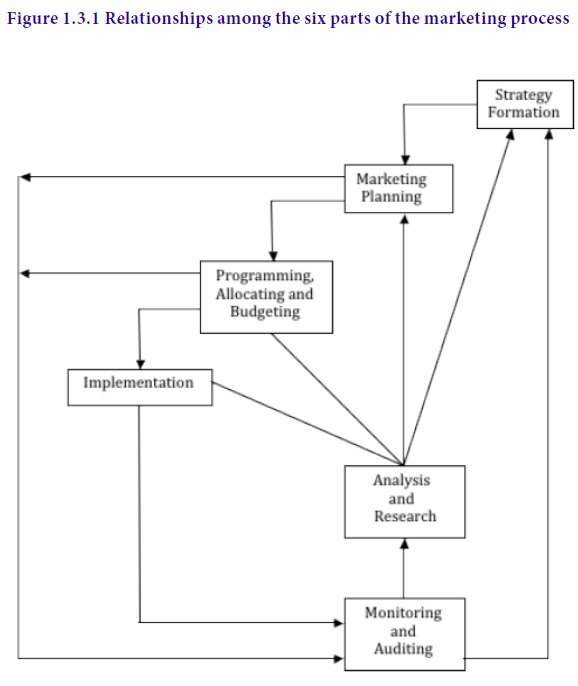MARKETING MANAGEMENT - Marketing Process
Introduction of Marketing Process
Posted On :
While there is lot of focus on the substance of marketing, particularly the marketing mix, an equally important aspect of marketing is the marketing process – how marketers do their job.
Introduction
While there is lot of focus on the substance of marketing, particularly the marketing mix, an equally important aspect of marketing is the marketing process – how marketers do their job. The process is
The marketing process can be divided in several different ways. One popular conceptualization of marketing tasks is:
1. Strategy formulation – the development of the broadest marketing/business strategies with the longest term impact.
2. Marketing planning – the development of longer-term plans which have generally stronger impact than the short-term programs.
3. Marketing programming, allocating and budgeting – the development of short-term programs which generally focus on integrated approaches for a given product and on the allocation of scarce resources.
4. Marketing implementation – the actual task of getting the marketing job done.
5. Monitoring and auditing – the review and analysis of programs, plans and strategies to assess their success and to determine what changes must be made
6. Analysis and research – the deliberate and careful acquisition and examination of qualitative and quantitative data to improve decision making
Though implied and considered as part of the overall corporate planning, the importance of situation analysis can never be undermined during marketing strategy formulation. Especially under product policies, but throughout the marketing mix elements, the company, customer and competitive scanning is so essential to marketing success. Situation analysis describes the process by which environmental assessment, marketing research and market size/growth estimates get done. It pays particular attention to environment scanning skills useful in forecasting and modeling consumer behavior.

While there is lot of focus on the substance of marketing, particularly the marketing mix, an equally important aspect of marketing is the marketing process – how marketers do their job. The process is
The marketing process can be divided in several different ways. One popular conceptualization of marketing tasks is:
1. Strategy formulation – the development of the broadest marketing/business strategies with the longest term impact.
2. Marketing planning – the development of longer-term plans which have generally stronger impact than the short-term programs.
3. Marketing programming, allocating and budgeting – the development of short-term programs which generally focus on integrated approaches for a given product and on the allocation of scarce resources.
4. Marketing implementation – the actual task of getting the marketing job done.
5. Monitoring and auditing – the review and analysis of programs, plans and strategies to assess their success and to determine what changes must be made
6. Analysis and research – the deliberate and careful acquisition and examination of qualitative and quantitative data to improve decision making
Though implied and considered as part of the overall corporate planning, the importance of situation analysis can never be undermined during marketing strategy formulation. Especially under product policies, but throughout the marketing mix elements, the company, customer and competitive scanning is so essential to marketing success. Situation analysis describes the process by which environmental assessment, marketing research and market size/growth estimates get done. It pays particular attention to environment scanning skills useful in forecasting and modeling consumer behavior.
It is important to note that each part of the
process is intimately related to the other parts of the process. Figure 1.3.1
is an attempt to capture the more important relationships. The dividing lines
between any two parts of the process are vague and unclear. This is
particularly true of those elements of the processes which are clearly
connected. For example, the distinction between a marketing plan and a
marketing program is very unclear for many. But the precise boundaries are not
as important as the general concept. Each element can be divided into smaller
sub elements. For example, marketing planning includes market assessment which
is the evaluation and selection to serve specific customer markets. Product
line planning is another sub element of marketing planning.

Tags : MARKETING MANAGEMENT - Marketing Process
Last 30 days 620 views













